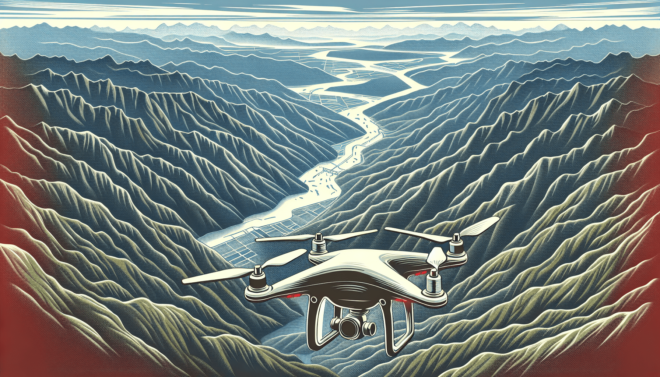How Do I Capture Aerial Shots Of Large Landscapes?
Are you looking to capture stunning aerial shots of large landscapes, but unsure of where to begin? Whether you’re a novice drone pilot or an experienced photographer, capturing aerial shots of large landscapes can be a rewarding and challenging endeavor. In this comprehensive guide, I will walk you through everything you need to know about capturing aerial shots of large landscapes, from choosing the right gear to understanding composition and lighting. Let’s get started!
Selecting The Right Drone
To capture stunning aerial shots of large landscapes, the first step is to select the right drone for the job. There are many drones available on the market, each with its own set of features and capabilities. When choosing a drone for landscape photography, consider the following factors:
- Camera quality: Look for a drone with a high-quality camera that can capture sharp, clear images.
- Flight time: Choose a drone with a long flight time to allow you to capture more footage in one session.
- GPS capabilities: GPS-enabled drones are easier to fly and can hold their position more accurately.
- Obstacle avoidance: Drones with obstacle avoidance sensors can help prevent collisions during flight.
- Price: Consider your budget and choose a drone that offers the best value for your money.
Once you have selected the right drone, familiarize yourself with its controls and features before taking it out for a landscape photography session.
Talking Points
When selecting a drone for landscape photography, consider factors such as camera quality, flight time, GPS capabilities, obstacle avoidance, and price. Familiarize yourself with your drone’s controls and features before taking it out for a landscape photography session.
Understanding Camera Settings
Capturing stunning aerial shots of large landscapes requires a good understanding of your camera settings. The key settings to pay attention to when shooting aerial landscapes are:
- ISO: The ISO setting controls the sensitivity of your camera’s sensor to light. A lower ISO setting is ideal for bright outdoor conditions to avoid noise in your photos.
- Aperture: The aperture setting controls the amount of light that enters the camera. A smaller aperture (higher f-stop number) results in a larger depth of field, ensuring that both foreground and background are in focus.
- Shutter speed: The shutter speed setting determines how long the camera’s shutter stays open. A faster shutter speed is ideal for freezing motion in fast-moving scenes.
- White balance: The white balance setting adjusts the colors in your photos to match the lighting conditions. Experiment with different white balance settings to achieve the desired color tones in your aerial shots.
By mastering your camera settings, you can capture stunning aerial shots of large landscapes with the perfect exposure and lighting.
Talking Points
Mastering your camera settings is crucial for capturing stunning aerial shots of large landscapes. Pay attention to settings such as ISO, aperture, shutter speed, and white balance to achieve the desired exposure and lighting in your photos.
Planning Your Shot
Before taking off with your drone to capture aerial shots of large landscapes, it’s important to plan your shot carefully. Here are some tips to help you plan your aerial photography session:
- Scout the location: Visit the location on foot or using satellite maps to scout potential aerial photography spots.
- Consider the lighting: Check the weather forecast and plan your shoot during the golden hours of sunrise and sunset for soft, warm lighting.
- Plan your flight path: Identify the key points of interest in the landscape and plan your flight path accordingly to capture different angles and perspectives.
- Check for flight restrictions: Ensure that you are aware of any flight restrictions or no-fly zones in the area before taking off with your drone.
By planning your shot in advance, you can maximize your chances of capturing stunning aerial shots of large landscapes with the perfect lighting and composition.
Talking Points
Planning your aerial photography session is essential for capturing stunning shots of large landscapes. Scout the location, consider the lighting conditions, plan your flight path, and check for flight restrictions before taking off with your drone.
Composition Techniques
Composition is key to capturing visually striking aerial shots of large landscapes. Here are some composition techniques to help you create impactful and engaging photos:
- Rule of thirds: Place points of interest in the scene on the intersections of the imaginary grid lines to create a balanced composition.
- Leading lines: Use natural or man-made lines in the landscape to guide the viewer’s eye through the photo and create a sense of depth.
- Symmetry and patterns: Look for natural symmetry or patterns in the landscape to create visually appealing compositions.
- Foreground interest: Include a point of interest in the foreground to add depth and scale to your aerial shots.
- Negative space: Use negative space to create a sense of minimalism and draw attention to the main subject in the landscape.
By applying composition techniques, you can create visually striking aerial shots of large landscapes that captivate the viewer’s attention.
Talking Points
Composition is key to capturing visually striking aerial shots of large landscapes. Use techniques such as the rule of thirds, leading lines, symmetry, foreground interest, and negative space to create engaging and impactful photos.

